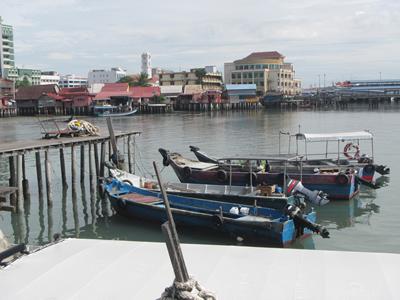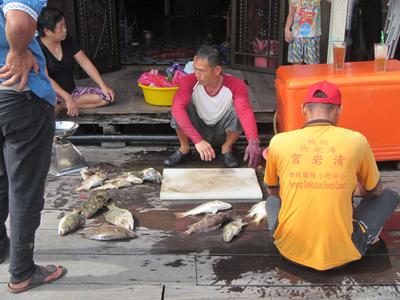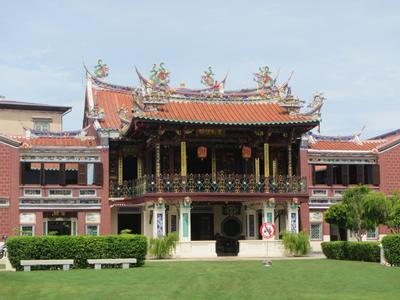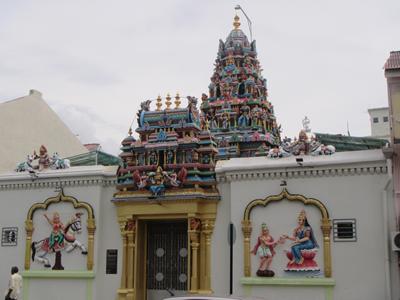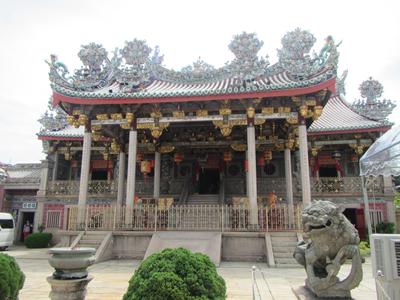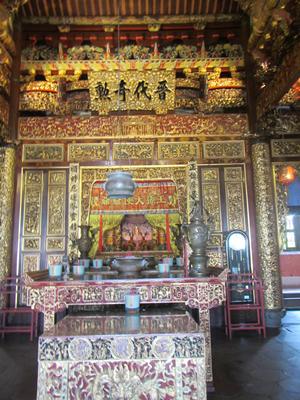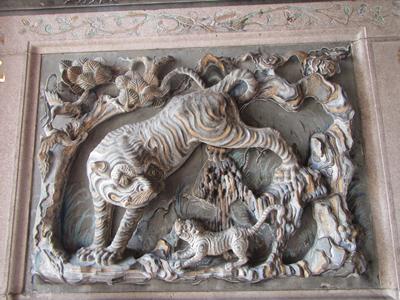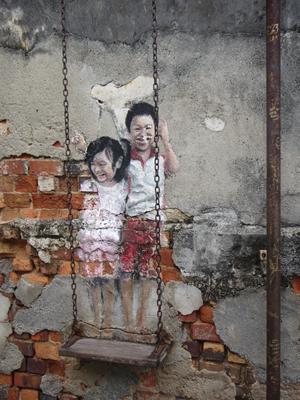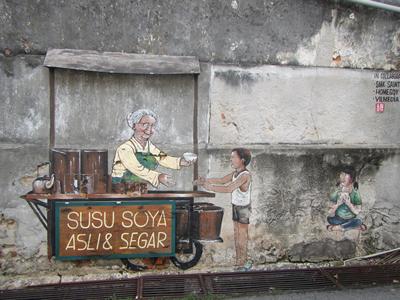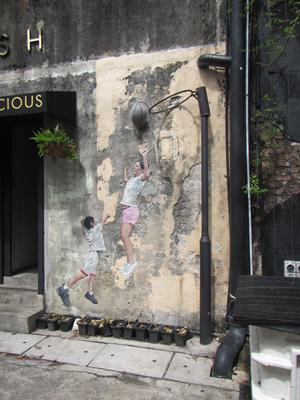Penang

Friday 24th November 2017 We dinghied ashore early this morning as we had a doctor’s appointment to keep. Penang is known for its medical tourism and we had pre-arranged, through the ladies of Ahoy Penang (a group of ex-pat yachties), a consultation with a skin doctor. It was just a screening, and after both of us were declared problem free, we had the rest of the day to explore. Penang is an island, about a quarter of the way down the west coast of Peninsular Malaysia in the Malacca Straits, an important stretch of water that connects Asia with Indonesia and China. In the 18th Century this was a very busy trade route for ships from Europe, and the British East India Company needed a halfway base for their maritime trade. In 1786 the Sultan of Kedah ceded Penang to the British East India Company in exchange for protection from Siam and Burma. It was established by Sir Francis Light as a commercial and naval base, and a free trading port, and Penang thrived. Light permitted all new arrivals to claim as much land as they could clear, and this quickly attracted settlers from all over Asia. Penang became one of the areas known as the Straits Settlements, which also included Melaka and Singapore, that were acquired by the British to function as free trade ports in their quest to dominate the trade routes in the area. The British themselves did not settle there in large numbers, but employed migrants from China and India to act as administrators, soldiers, labourers and tradesmen. By the middle of the 19th Century, Penang had become a major focus of the Chinese Opium trade, dominated by Chinese secret societies, and a dangerous place. It was largely untouched by the First World War, but in WW2 was taken over by the Japanese after the Europeans evacuated the island leaving a defenceless population. The occupation lasted three and a half years and were the darkest of Penang’s history. In 1946 the Straits Settlements were dissolved and Penang became a state of the Federation of Malaya in 1948. It became one of independent Malaysia’s thirteen states in 1963, but when its free port status was withdrawn six years later, it went into decline. Over the next twenty years or so, Penang built itself into one of the largest electronic manufacturing centres of Asia, and today combines this with a thriving tourist industry. The capital, George Town, was designated a UNESCO World Cultural Heritage City in 2008 for having “a unique architectural and cultural landscape without parallel anywhere in East and South East Asia.” Five cultures are represented – Malay, Indian, Chinese, British and Baba-Nonya, with Chinese temples in Little India, Mosques in Chinatown, and skyscrapers soaring above Raj-era buildings. We headed into George Town, and with so much to see, decided just to wander through the streets and get a feel for the place, just taking in the sights and smells. We only had the rest of today to get a taste of the place, but soon decided we would come back another time for a longer look. We started at the clan jetties which we had passed by boat on the way up. Clans were associations formed by the Chinese to welcome the huge influx of immigrants in the 18th and 19th Centuries. They built clan houses, known locally as kongsi to create a sense of community, provide lodgings and find work for newcomers. As time went by, the clans became competitive over their kongsi, and as a result Penang has one of the densest concentrations of clan architecture outside China. The clan jetties are a collection of rickety docks with stilt houses which were the homes and docking places of the growing Chinese communities that lived and worked in the busy port area. The largest and most intact remaining today is the Chew jetty, which consists of seventy-odd elevated houses, a docking area (yachts not allowed!), some shrines, a community hall and many tourist shops.
We walked along the Chew Jetty, one of the clan jetties, lined with shops. Fishermen with their catch.
Traditional Chinese shophouses. More ornate architecture on these shophouses built in 1907.
Cheah Kongsi Sri Mahamariamman Hindu Temple
Khoo Kongsi, the largest Chinese clanhouse in Penang. Elaborate carvings outside.
Elaborately decorated inside. One of many beautiful carvings. Around almost every street corner, we came across street art, often on walls that were crumbling and neglected.
We had the most enjoyable few hours wandering around George Town, and promised ourselves another visit, probably by plane though, so that we didn’t have the worry of the boat left in that very exposed anchorage. Reluctantly we headed back to the marina where we joined the rally get-together, listened to a guest tell us about how to obtain (buy!) a renewable ten-year visa that would allow us the right to stay in Malaysia as long as we desired, sampled a variety of sausages from the barbecue, drank a few beers and chatted to other yachties for a few hours before retiring to the boat. It had been a long and very enjoyable but tiring day, and we would be off at first light in the morning for Langkawi. We would sleep well. |
